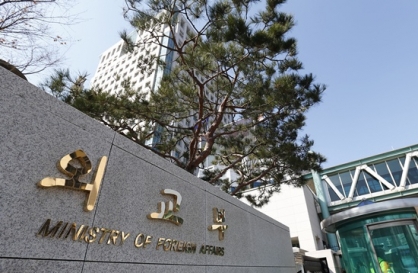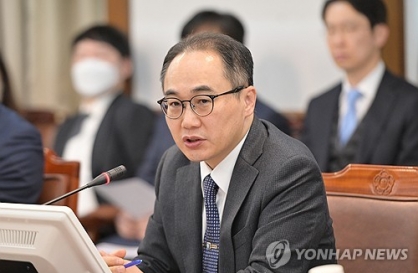Nine years after the United Nations’ General Assembly endorsed the Hyogo Framework for Action to reduce disaster losses the world is making progress in building more resilient communities, cities and nations.
The Republic of Korea should be proud of its significant contributions to this global effort. The country’s National Emergency Management Agency has emerged as a leading advocate of stronger disaster risk management to protect and sustain the huge development gains of recent years.
NEMA, along with Incheon City, is partnering with the U.N. Office for Disaster Risk Reduction to support local and national authorities around the world to build a culture of safety and resilience.
Korea is also embracing the concept of sharing best practice closer to home. At a recent forum, senior representatives from seven Korean cities and local governments worked alongside colleagues from eight other countries to develop draft “Safe and Resilient Cities Action Plans.”
The conference was held at UNISDR’s Office for Northeast Asia and its Global Education and Training Institute for Disaster Risk Reduction, in Incheon’s new development of Songdo.
Fifty-six Korean cities and municipalities have joined UNISDR’s Making Cities Resilient Campaign, which now involves 1,713 local governments globally. City leaders and municipal disaster managers across the country are using the campaign’s handbook, now translated into Korean, to augment their Action Plans to reduce disaster risk.
Last week on Jejudo Island, NEMA’s director general, Kim Gye-jo, welcomed high-level government representatives to an Expert Meeting on Disaster Loss and Disaster Risk Reduction Technology Sharing for Northeast Asia.
He encouraged officials and experts from China, Japan, Mongolia and Korea to increase their cooperation so Northeast Asia is better able to face the common challenge of more frequent, intense and unpredictable hazards. Those present embraced Kim’s message and delivered upbeat reports on how they are progressing in building more resilient communities and nations.
The chief of Mongolia’s own NEMA, Dulamdorj Togooch, talked about how his government has prioritized implementing the Hyogo Framework for Action to reduce disaster risk. Mongolia has reformed its legal framework for disaster management and increased the awareness of disaster risk among its population. The country has also developed its human and technical resources, disaster-related academic research, and capacity in disaster risk assessment.
Kun Gao of China’s National Disaster Reduction Centre within the Ministry of Civil Affairs outlined a “typical disaster year” in her country: an average of 10 million people evacuated, 2.5 million homes damaged or destroyed, 60-80 million people in need of some form of temporary relief and direct economic losses of $48.3 billion.
Yet despite the scale of the challenge Gao highlighted progress in several areas, including better governance, greater awareness of the issue through vast social mobilization, upgrades in technology and a greater application of knowledge.
Soichi Nakajima, the director of the International Cooperation Disaster Management Bureau in the Government of Japan’s Cabinet Office, said the Hyogo Framework for Action had become a global symbol to promote resilience. He emphasized the importance of the coming World Conference on Disaster Risk Reduction in March 2015, which will be hosted in Sendai, Japan, four years after the devastating 2011 earthquake and tsunami.
The above report card from across Northeast Asia signals considerable progress since the world was shocked into action after the 2004 Indian Ocean tsunami to agree to the Hyogo Framework. Those senior representatives who gathered on Jejudo Island last week resolved to play their part in adding to the achievements of the Hyogo Framework and building a stronger post-2015 framework for disaster risk reduction.
While the achievements are undeniable, much more needs to be done. By and large, policies, frameworks and legislation have not addressed the underlying drivers of disaster risk, such as unplanned urban development, poverty and vulnerable livelihoods, and ecosystem decline. A major gap also remains between policy development and implementation on the ground.
There is clearly a need for a bigger role for the private sector in the post-2015 international framework for disaster risk reduction. How businesses ― accounting for up to 85 percent of total investment globally ― decide to allocate their billions of dollars will largely determine whether economic losses from disasters will continue to escalate.
Next year’s World Conference on Disaster Risk Reduction will have a considerable bearing on whether or not more lives, jobs and property can be saved and whether the number of people affected by disasters each year, which currently averages over 200 million worldwide, is reduced.
The ongoing commitment of NEMA and Incheon City to support efforts to address this major challenge is a global example for others to follow.
By Sanjaya Bhatia
Sanjaya Bhatia is head of the U.N. Office for Disaster Risk Reduction’s Office for Northeast Asia and the Global Education and Training Institute, based in Songdo, Incheon. ― Ed.
The Republic of Korea should be proud of its significant contributions to this global effort. The country’s National Emergency Management Agency has emerged as a leading advocate of stronger disaster risk management to protect and sustain the huge development gains of recent years.
NEMA, along with Incheon City, is partnering with the U.N. Office for Disaster Risk Reduction to support local and national authorities around the world to build a culture of safety and resilience.
Korea is also embracing the concept of sharing best practice closer to home. At a recent forum, senior representatives from seven Korean cities and local governments worked alongside colleagues from eight other countries to develop draft “Safe and Resilient Cities Action Plans.”
The conference was held at UNISDR’s Office for Northeast Asia and its Global Education and Training Institute for Disaster Risk Reduction, in Incheon’s new development of Songdo.
Fifty-six Korean cities and municipalities have joined UNISDR’s Making Cities Resilient Campaign, which now involves 1,713 local governments globally. City leaders and municipal disaster managers across the country are using the campaign’s handbook, now translated into Korean, to augment their Action Plans to reduce disaster risk.
Last week on Jejudo Island, NEMA’s director general, Kim Gye-jo, welcomed high-level government representatives to an Expert Meeting on Disaster Loss and Disaster Risk Reduction Technology Sharing for Northeast Asia.
He encouraged officials and experts from China, Japan, Mongolia and Korea to increase their cooperation so Northeast Asia is better able to face the common challenge of more frequent, intense and unpredictable hazards. Those present embraced Kim’s message and delivered upbeat reports on how they are progressing in building more resilient communities and nations.
The chief of Mongolia’s own NEMA, Dulamdorj Togooch, talked about how his government has prioritized implementing the Hyogo Framework for Action to reduce disaster risk. Mongolia has reformed its legal framework for disaster management and increased the awareness of disaster risk among its population. The country has also developed its human and technical resources, disaster-related academic research, and capacity in disaster risk assessment.
Kun Gao of China’s National Disaster Reduction Centre within the Ministry of Civil Affairs outlined a “typical disaster year” in her country: an average of 10 million people evacuated, 2.5 million homes damaged or destroyed, 60-80 million people in need of some form of temporary relief and direct economic losses of $48.3 billion.
Yet despite the scale of the challenge Gao highlighted progress in several areas, including better governance, greater awareness of the issue through vast social mobilization, upgrades in technology and a greater application of knowledge.
Soichi Nakajima, the director of the International Cooperation Disaster Management Bureau in the Government of Japan’s Cabinet Office, said the Hyogo Framework for Action had become a global symbol to promote resilience. He emphasized the importance of the coming World Conference on Disaster Risk Reduction in March 2015, which will be hosted in Sendai, Japan, four years after the devastating 2011 earthquake and tsunami.
The above report card from across Northeast Asia signals considerable progress since the world was shocked into action after the 2004 Indian Ocean tsunami to agree to the Hyogo Framework. Those senior representatives who gathered on Jejudo Island last week resolved to play their part in adding to the achievements of the Hyogo Framework and building a stronger post-2015 framework for disaster risk reduction.
While the achievements are undeniable, much more needs to be done. By and large, policies, frameworks and legislation have not addressed the underlying drivers of disaster risk, such as unplanned urban development, poverty and vulnerable livelihoods, and ecosystem decline. A major gap also remains between policy development and implementation on the ground.
There is clearly a need for a bigger role for the private sector in the post-2015 international framework for disaster risk reduction. How businesses ― accounting for up to 85 percent of total investment globally ― decide to allocate their billions of dollars will largely determine whether economic losses from disasters will continue to escalate.
Next year’s World Conference on Disaster Risk Reduction will have a considerable bearing on whether or not more lives, jobs and property can be saved and whether the number of people affected by disasters each year, which currently averages over 200 million worldwide, is reduced.
The ongoing commitment of NEMA and Incheon City to support efforts to address this major challenge is a global example for others to follow.
By Sanjaya Bhatia
Sanjaya Bhatia is head of the U.N. Office for Disaster Risk Reduction’s Office for Northeast Asia and the Global Education and Training Institute, based in Songdo, Incheon. ― Ed.
-
Articles by Korea Herald




![[Weekender] Korean psyche untangled: Musok](http://res.heraldm.com/phpwas/restmb_idxmake.php?idx=644&simg=/content/image/2024/05/02/20240502050841_0.jpg&u=)

![[Eye Interview] 'If you live to 100, you might as well be happy,' says 88-year-old bestselling essayist](http://res.heraldm.com/phpwas/restmb_idxmake.php?idx=644&simg=/content/image/2024/05/03/20240503050674_0.jpg&u=)











![[Herald Interview] Director of 'Goodbye Earth' aimed to ask how we would face apocalypse](http://res.heraldm.com/phpwas/restmb_idxmake.php?idx=652&simg=/content/image/2024/05/03/20240503050732_0.jpg&u=)
